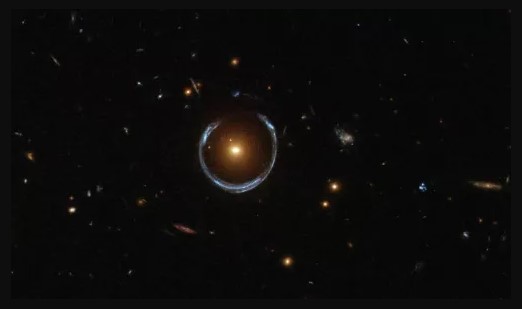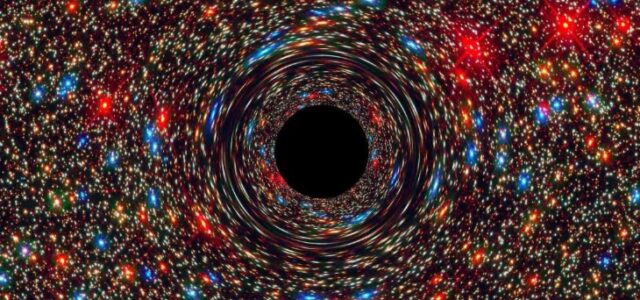Astronomers may have found the largest black hole ever detected a cosmic giant weighing an estimated 36 billion times the mass of our Sun. It sits at the heart of the Cosmic Horseshoe galaxy, located about 5 billion light-years from Earth, and is nearly 10,000 times more massive than the supermassive black hole in the Milky Way.
The discovery was made by researchers from the University of Portsmouth in the UK and the Federal University of Rio Grande do Sul (UFRGS) in Brazil, with findings published in Monthly Notices of the Royal Astronomical Society.
36 Billion Suns: Scientists Find a Black Hole of Staggering Size
The Cosmic Horseshoe galaxy is famous for creating a striking phenomenon called an Einstein ring, where its immense gravity bends the light of a more distant galaxy into a perfect circle. This effect is what inspired the galaxy’s name.
Scientists believe ultramassive black holes like this one are usually found in “fossil group” galaxies the remnants of multiple galaxies that merged over billions of years. The Cosmic Horseshoe appears to be the last bright galaxy in its group, suggesting it swallowed several others in the past.
To determine the black hole’s mass, the team used two methods:
- Gravitational lensing — measuring how the galaxy’s gravity distorts light from objects behind it.
- Stellar kinematics — studying the speed and motion of nearby stars.
While tracking stars is usually the best way to weigh a black hole, it’s challenging for distant galaxies. By combining both methods, the team was able to measure this black hole’s mass with far greater accuracy even at such an immense distance.
“This is among the top 10 most massive black holes ever found, and possibly the largest,” said Professor Thomas Collett from the University of Portsmouth. “Our method gives us much more confidence in the measurement compared to traditional techniques.”

What makes the find even more remarkable is that the black hole is dormant, meaning it’s not actively feeding on surrounding material. Its presence was detected purely through its overwhelming gravitational influence.
Lead researcher Carlos Melo from UFRGS noted that their technique could help uncover other hidden ultramassive black holes that are not currently active. The team suspects the Cosmic Horseshoe black hole reached its colossal size through a series of galaxy mergers, where multiple central black holes combined into one.
“This could be the final stage of both galaxy and black hole evolution,” Collett explained.
Looking ahead, the researchers plan to use their method with data from the European Space Agency’s Euclid telescope to track down more of these cosmic giants and study their role in shaping galaxies.
